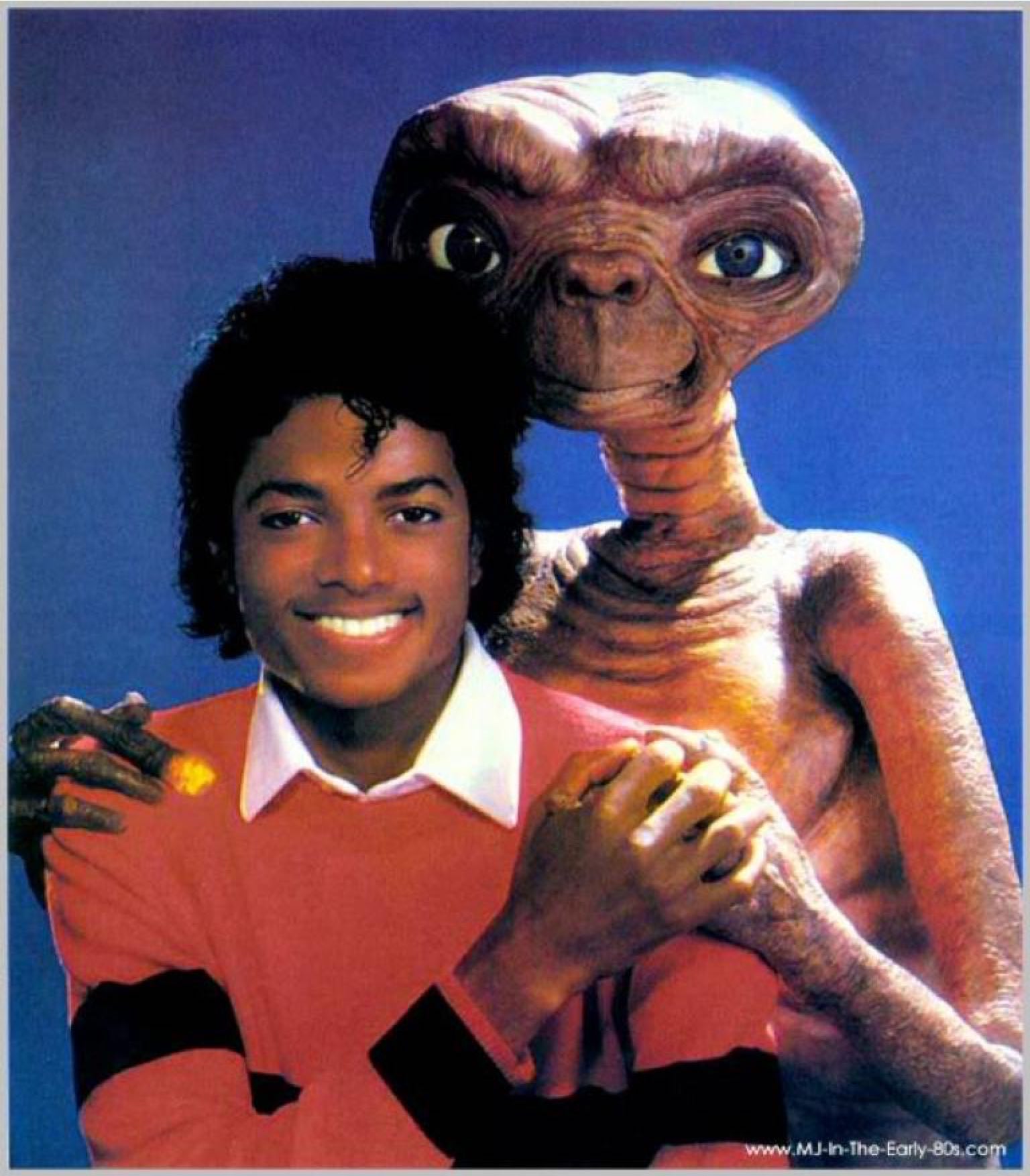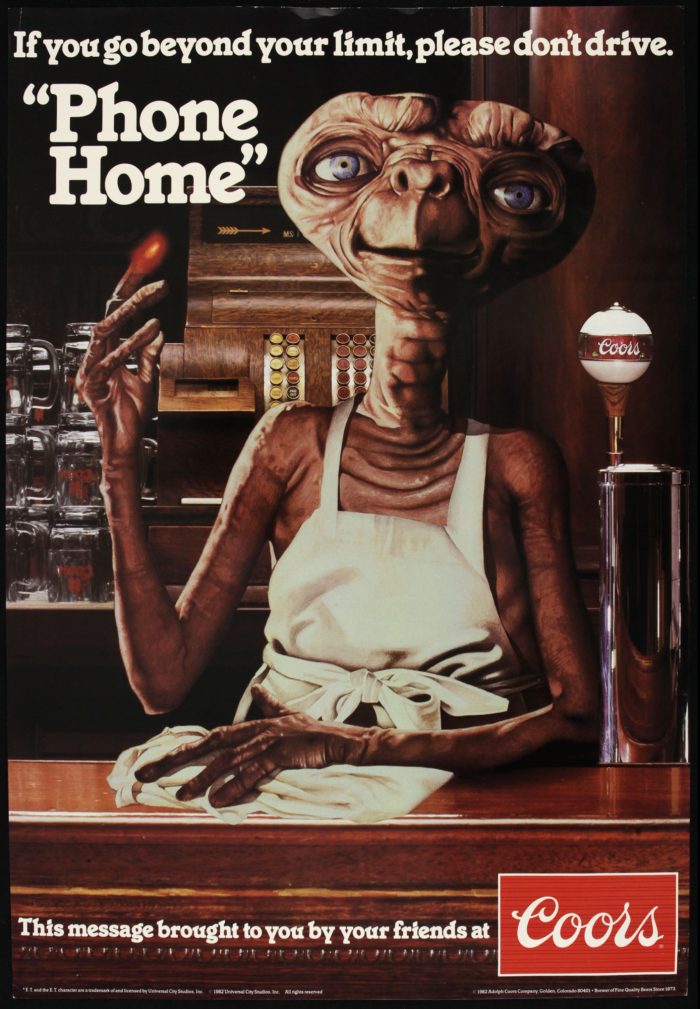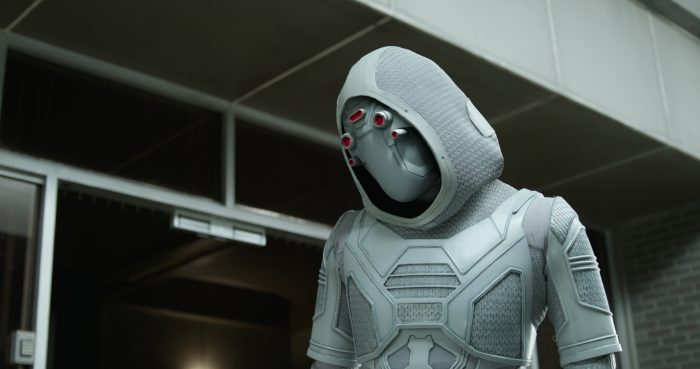Director Peyton Reed on the Movies That Inspired ‘Ant-Man and the Wasp’, Magic, Easter Eggs and the Editing Process [Interview]
Ant-Man and the Wasp is in theaters and I can now share with you my interview with director Peyton Reed. We get sidetracked talking about E.T., and then discuss how the development process of the sequel was different from the first film, the film’s close-up magic subplot, the films the inspired the sequel, how they accomplished the shrinking effects for the film, hidden easter eggs to look out for, the editing process, and how much longer the assembly edit of the film was.

[Note: Peter was wearing a t-shirt with the above image on it, which Peyton brings up as he walks in for the interview]
Hey, Peyton.
How’s it going?
Good, how are you?
Good to see you.
Peter: Good to see you too. Yeah.
That t-shirt is amazing.
Feige said that Taika [Waititi] has a poster of this in his production office.
He does. I actually have the picture disc.
Oh you have that–?
Yeah. I’m ashamed to say. Ashamed slash proud to say.
I’ve never owned that. I do have the E.T. Coors advertisement on my office wall. It’s insane it exists.
Is that real?
Yeah, he’s behind the bar and it says, before you drive, phone home.
[laughs] Nice. I was wondering like how they would tie Coors into E.T. Makes sense.
Yeah, they would never do that today… Well, it doesn’t make sense.
No. Kids, if you’re gonna drink Coors Lite…
When you came up to the first film, obviously you came on late into the process. This one you were very actively involved in development. How does that begin? Like, do they have like an idea? Do they like we wanna do a story with Ghost? Like how does…?
No, it really is like us getting in a room with the writers. And really talking about all the things that we setup in the first movie that we know we wanted to pay off or further in this movie. And really sort of just batting around just general ideas. There’s no template whatsoever. Which is really nice. And particularly for the Ant-Man movies, which we didn’t have any of the narrative responsibility of dealing with Infinity Stones or anything like that. So we could operate in our own little corner. What we did know is that this movie had to be not only a sequel to Ant-Man but also to Civil War. You couldn’t ignore what–
And you knew like right away that this is gonna take place before Infinity War. We don’t have to deal with that.
Right away we knew it really just had to deal with Ant-Man and Civil War. We knew we were gonna come out before Infinity War. But we really didn’t deal at all with if we were going to have to or not have to deal with any of the fallout of that movie. Or if we were, how directly or indirectly we were gonna address it in the body of our movie. There were various ideas that we and the writers threw around for a long time. So it was really just amassing what the story was gonna be. And then sort of figuring out that aspect of the movie later into the process. But we knew we had to deal with, I knew I had very strong feelings about well if Scott had taken the suit and gotten involved with the in-fighting with the Avengers, that’s Hank Pym’s worst nightmare. You’re taking my tech that I’ve entrusted with you and exposing it to the Avengers and exposing it to Tony Stark and then also getting thrown into the Raft and the suit’s confiscated. Like that’s, that is a fireable offense as far as Hank Pym’s concerned.
So we knew that that was a great starting point for this movie. Starting Hank and Hope and Scott estranged from each other. I liked that. That gave us a really great jumping off point. And also a point that like I’ve never done a sequel before. And I can only go by what I like and don’t like in sequels. And I like in sequels when the first movie doesn’t start right as the first one ends, where there’s water under the bridge and the audience has to play some catch-up as to like wait, what happened to them? Why are they not speaking? What’s going on? That was exciting to me.
One of the early scenes in this movie is the fantastic sequence where they’re in that fort with the slide stuff. It reminded me in a way of The Goonies and there’s nothing really like that. I guess the Rube Goldberg thing.
Yeah.
What movies did you take as inspiration going into this?
I think the biggest inspirations were when we talked about the first movie really [being] sort of a heist movie. We wanted to stay in the crime genre in this thing. And we really talked a lot about like structurally like Elmore Leonard novels. Like what if Elmore Leonard wrote a science fiction novel and Marvel made a movie of it? That was sort of our jumping off point.
But we really looked at movies like Midnight Run was a big influence in that there’s a very simple goal. De Niro’s a bounty hunter, he’s gotta bring in Charles Grodin, but then there’s the rival bounty hunters and the FBI and all these complications and double-crosses that happen. That’d be a cool template for a Marvel movie. And After Hours, the Scorsese movie, was a big one. We liked the idea of a very specific timeline, just over a couple of days. Scott Lang has three days left of house arrest. What could possibly go wrong? Yeah, that was the, you know, really was just kind of like one crazy night idea.
Of course Bogdanovich’s What’s Up, Doc? was a big influence. A movie I loved as a kid and we screened at Marvel and it’s like here’s the ridiculous comedic car chase through San Francisco. And also the chemistry between Streisand and Ryan O’Neal in that movie. And that was a big one.
And then just again, always going back to like the, I think the Ant-Man movies are different than a lot of the other things in the MCU in that all the action sequences are really they come from a comedic place. And Buster Keaton is a giant influence. I went back and watched Seven Chances again, which has to me the greatest chase scene of all time in a movie.
And also to me like one of the earliest examples of a ticking clock in a movie. You know, if you’re not married by 7:00 PM on your 27th birthday, you’re gonna not get this 20 million dollars or whatever it was in the movie. Like that kind of thing was like okay, that’s what we’re doing. We, if we can make a connection to the Quantum Realm and we can get Janet’s location, great, but there’s a finite amount of time that we have to do it. And it’s good for the drama and it’s good for the comedy.
Continue Reading Peyton Reed on Magic, the Quantum Realm, and More >>
The post Director Peyton Reed on the Movies That Inspired ‘Ant-Man and the Wasp’, Magic, Easter Eggs and the Editing Process [Interview] appeared first on /Film.
from /Film https://ift.tt/2MRXEAa



No comments: